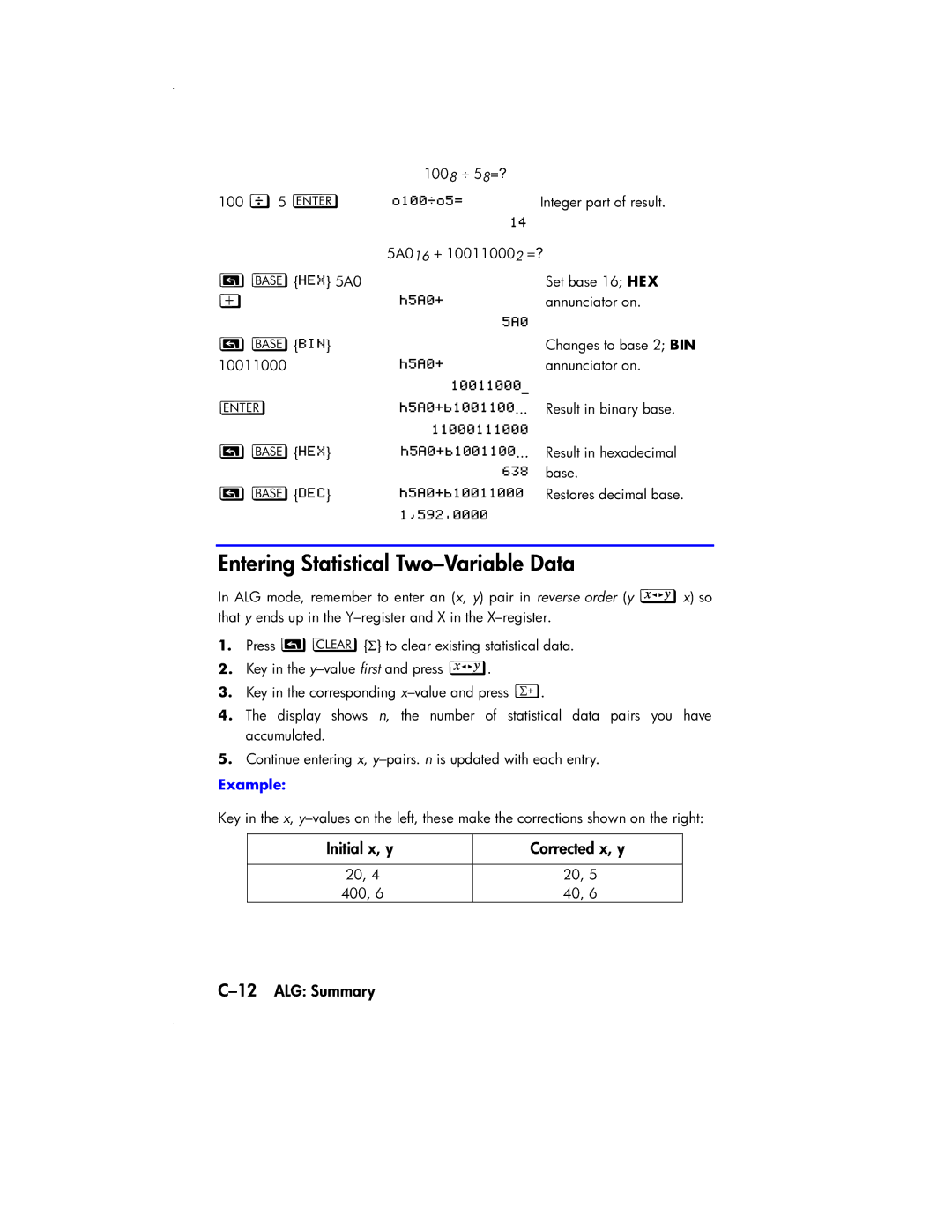| 1008 ÷ 58=? |
|
100 ¯ 5 Ï | | Integer part of result. |
| |
|
| 5A016 + 100110002 =? | |
¹¶{} 5A0 | | Set base 16; HEX |
Ù | | annunciator on. |
| |
|
¹¶{} | | Changes to base 2; BIN |
10011000 | | annunciator on. |
| _ |
|
Ï | ... | Result in binary base. |
| |
|
¹¶{} | ... | Result in hexadecimal |
| | base. |
¹¶{} | | Restores decimal base. |
| |
|
Entering Statistical Two–Variable Data
In ALG mode, remember to enter an (x, y) pair in reverse order (y wx) so that y ends up in the
1.Press ¹¡{Σ} to clear existing statistical data.
2.Key in the
3.Key in the corresponding
4.The display shows n, the number of statistical data pairs you have accumulated.
5.Continue entering x,
Example:
Key in the x,
Initial x, y | Corrected x, y |
|
|
20, 4 | 20, 5 |
400, 6 | 40, 6 |
